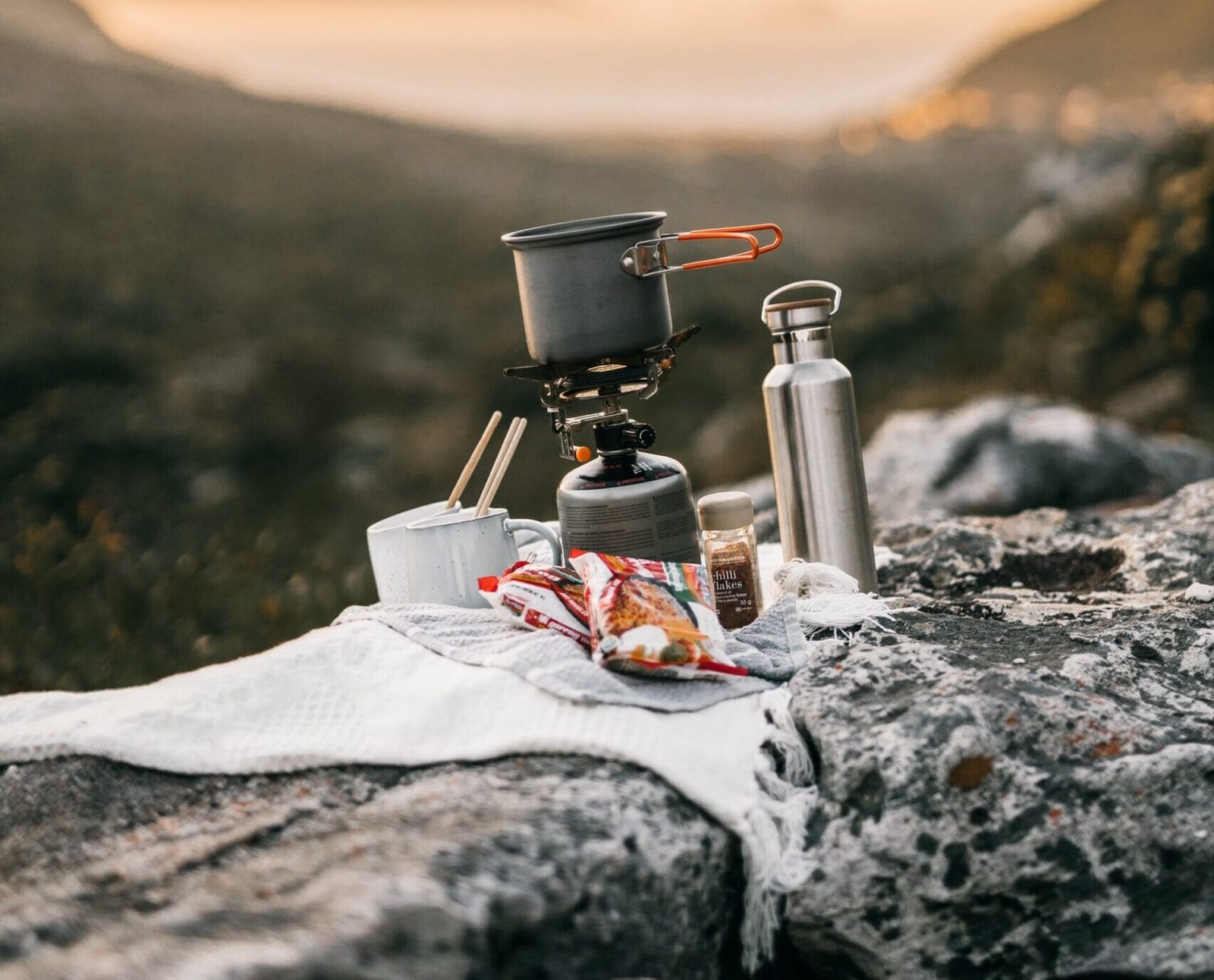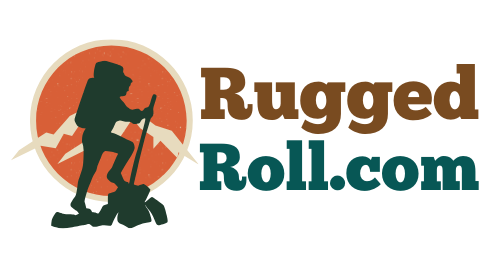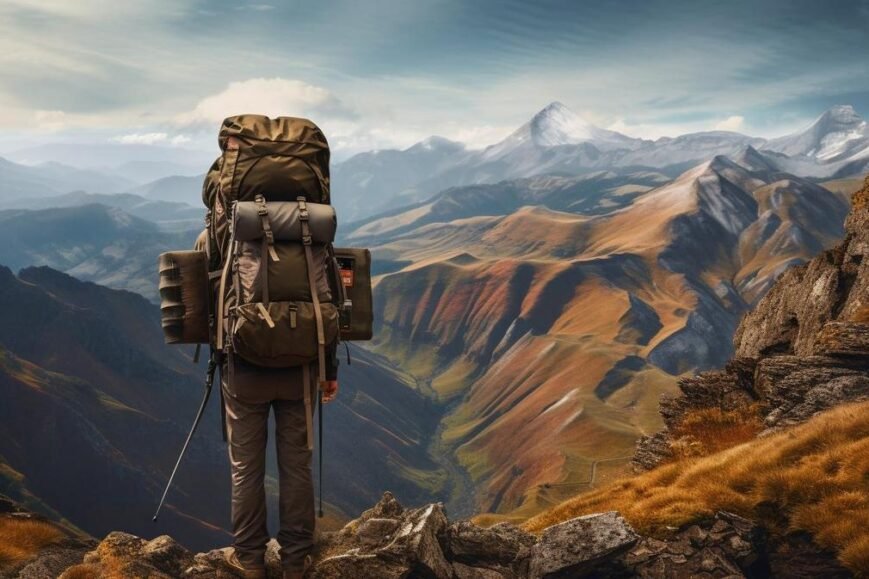- Thru-hiking essentials include navigation tools (map, compass, GPS), lightweight and layered clothing, ultralight tent, comfortable shoes, basic hygiene products, first-aid kit, safety gear (whistle, light), and appropriate food and water solutions.
- Prepare for long distances by training, setting a consistent pace, arranging food/water resupply, securing permits, and incorporating rest days.
- Financially budget a few thousand dollars, pack high-energy food, purify all water, and plan resupply points for securing food and water.
- Gear management involves selecting a comfortable backpack, weather-appropriate sleeping bag, light tent, efficient packing methods, and a clear itinerary.
- Emotional well-being can be affected by solitude and physical challenges, but also offers a sense of achievement and creates strong social bonds.
- Crucial considerations for planning include knowing the trail, arranging transportation to/from trailheads, preparing for varied weather, obtaining necessary permits, and knowing emergency exit points.
Ready to tackle a long-distance hike? Get this straight: thru-hiking is no walk in the park. It’s an epic adventure that demands serious prep and the right gear. Stick with me, and I’ll show you the must-haves for your pack, the best boots for your feet, and how to stay safe out there. From ultralight tents to first-aid musts, let’s dig into what it truly means to be trail-ready for the long haul.
What Should I Include in My Thru-Hiking Essentials?
Thru-hiking means to walk a long path from start to end. It can be very hard. You face tough trails for many days. For such a long walk, your pack must have only the most key items. Let’s talk about those must-haves.
You need tools to find your way, like a map and a compass. A good GPS can help too. For what you wear, think of layers. A shirt that dries fast. A warm layer. A raincoat. All light. All able to fit in your pack with ease.
An ultralight tent will be your shield at night. Pick one that fights the wind and rain but is light as a feather. Shoes are just as key. Find the ones that fit best. They must take on rocks and mud yet be kind to your feet. Read up on thru-hike footwear recommendations to choose well.
Do not forget soap and a toothbrush. They are small but help keep you clean. A first-aid kit is a must. It must have band-aids and meds in case you get a cut or feel sick. Your safety gear should not stay behind. Things like a whistle and a light. Add a warm hat and gloves too.
All these are your thru-hiking needs. They’ll help you face long days on the path with more joy and less weight. Remember, each item must earn its place in your pack. Take less, and adventure more!

How Can I Prepare for Long-Distance Hiking Trips?
Let’s say you’re gearing up for a hike that spans months. How long does it take to be a thru-hike? Most take about five months, but it depends on your pace.
Start your thru-hike preparation checklist well before you lace up those boots. Think of what you’ll need every step of the way. Your long-distance hiking tips should include maps, clothes, and a tent. Don’t forget the little things like a toothbrush.
Building trail endurance is key. You’ve got to train your body. Make it strong. Start with short hikes. Add miles each week. Soon, you’ll be hiking longer without feeling spent. It’s like building a muscle. The more you work it, the stronger it gets.
Are you pacing for long-distance hikes? Important! Setting a pace and keeping to it helps you go far without burnout. Start slow to warm up, find a comfy pace, and stick to it. Don’t race. It’s not about speed; it’s about distance.
Another thing to nail down is your food and sleep along the way. Learn about trail resupply strategies. Where can you pick up more food? How often? You need enough energy to keep going. Planning this keeps your pack light and your stomach full.
Also, think about things like permits and tech tools. You might need special permission for some places. Make sure you get these sorted out earlier. Gadgets can help you stay safe and on track. Think GPS and emergency beacons.
Then, there’s downtime. It’s not about pushing through no matter what. You need rest days. Listen to your body. It tells you when to stop and heal. It’s a must to pencil in breaks for your mind and legs.
Take time to learn and get ready. With the right tips and a solid checklist, your hike can be the amazing adventure you’re dreaming of.
What are the Best Strategies for Securing Food and Water on a Thru-Hike?
You need enough money to cover food, gear, and permits for a thru-hike. The exact amount varies, but plan for a few thousand dollars. This should include funds for high-calorie foods and a water filter or purification tabs.
For trekking nutrition, figure out how many calories you’ll burn each day. This could be between 3,000 to 5,000 or more. Choose foods high in energy, like nuts and dried fruit. Pack lightweight, calorie-dense eats to save space and weight.
Water is crucial, so learn how to find and make it safe to drink. Use maps to find streams and lakes. Always purify water with a filter, UV light, or boiling. Never drink straight from a natural source, as this could make you sick.
Pack your food in a way so it won’t get crushed or wet. Use bags that seal tight. This also helps keep bears and critters out.
On some trails, you might be able to fish or pick berries. Check the rules first though. You might need a permit for that.
Resupply points are spots where you can get more food on your hike. Leave boxes with supplies at these points before you start. Or have a friend send them to you there.
Use a map and compass to find your way to water sources or towns. This is vital if you get lost or run out of food or water. Always have an emergency plan and let someone know it. They can help if you don’t check in when you should.
Remember, planning is key for a happy and safe thru-hike. Always have enough food and a way to get clean water. This way you can focus on the amazing views and adventure that await!
How Do I Choose and Manage My Gear for a Multi-Month Thru-Hike?
What gear do you need for a thru-hike?
Backpack
- A sturdy and comfortable backpack with a capacity suitable for carrying all your gear.
Hiking Boots/Shoes
- Quality footwear that provides support, protection, and comfort on various terrains.
Clothing
- Moisture-wicking and quick-drying shirts, pants, and underwear.
- Insulating layers (fleece jacket, down jacket) for colder temperatures.
- Rainproof/waterproof jacket and pants.
- Hats, gloves, and socks suitable for the expected weather conditions.
Sleeping Gear
- Tent or shelter: Lightweight and durable, suitable for the expected weather conditions.
- Sleeping bag: Rated appropriately for the expected temperatures.
- Sleeping pad: Provides insulation and comfort while sleeping.
Navigation
- Topographic maps or trail guides of the area.
- Compass and/or GPS device for navigation.
- Whistle or signaling device for emergencies.
Water and Hydration
- Water bottles or hydration bladder with enough capacity for your needs.
- Water filtration system or purification tablets for obtaining safe drinking water from natural sources.
Food and Cooking
- Lightweight stove and fuel.
- Cooking pot and utensils.
- Lightweight, high-calorie, and easy-to-prepare food.
- Bear canister or bear bag for storing food and preventing wildlife encounters.
- Ziplock bags or food storage containers for organization.
Lighting
- Headlamp or flashlight with extra batteries.
- Lantern for campsite illumination.
First Aid Kit
- Bandages, gauze, adhesive tape, and antiseptic wipes.
- Pain relievers, allergy medicine, and any necessary prescription medications.
- Blister treatment supplies.
- Tweezers, scissors, and a thermometer.
Personal Care Items
- Sunscreen and lip balm.
- Insect repellent.
- Toilet paper and hand sanitizer.
- Toothbrush, toothpaste, and biodegradable soap.
Emergency Gear
- Emergency blanket or bivy sack.
- Fire-starting tools (lighter, matches, fire starter).
- Whistle or signaling mirror.
- Multi-tool or Swiss army knife.
Miscellaneous
- Trekking poles for added stability and reduced strain on joints.
- Duct tape or repair kit for gear.
- Extra set of batteries.
- Cash and identification.
- Camera or smartphone for capturing memories.
- Trash bags for carrying out waste.
- Zip ties and cord for gear repairs or other uses.

How to manage gear weight and volume?
Pick light items and learn to pack smart. Fit everything you need, nothing more.
Selecting a backpack for comfort and capacity is a start. Your back will thank you for a pack that fits well and can hold all your stuff. For choosing a sleeping bag for thru-hikes, think about the weather. You need one that keeps you warm or cool, depending on when you hike. Pads are a must too. They help you sleep soundly and are light to carry.
For a home away from home, lightweight tent options matter. A heavy tent drags you down. A light one makes hiking easier.
Trail-specific training routines are your secret weapon. Get your body used to long treks before you start. It helps a lot. Practice hikes are a must.
Tips for packing efficiently help too. Roll your clothes. Use bags to keep things tight and tidy. A well-packed bag makes a big difference.
Your multi-month hiking itinerary is your plan of action. It shows you where you’re going and when. Make sure your gear fits your plan.
Remember, the right gear and knowledge are your best friends on the trail! Keep your pack light, your gear right, and your spirit bright, and you’re set for the trek of a lifetime.
Can Thru-Hiking Have an Impact on Emotional Well-being?
Thru-hiking can deeply affect your emotional health. It can lead to joy and a sense of achievement. Yet, the long days alone can also bring loneliness. You learn to cope with your own company and find strength inside. This resilience grows each time you face and beat the trail’s tests. Along the way, you join a band of fellow hikers. These bonds can last a lifetime. As you hike, your day-to-day life changes. You get used to a new routine centered on the path ahead. By dealing with each day, you slowly become part of the trail and its rhythm.
Coping with the emotional challenges of solitude is not easy. At first, the silence can be deafening, your thoughts too loud. But one learns to listen to the sounds of nature, to find peace in the quiet. Kind words or a warm meal shared with other hikers becomes precious, a simple joy we often forget in our busy lives.
Overcoming thru-hike challenges comes in many forms. A steep climb or stormy weather can test the body. However, it’s the inner battles, like doubt or fear, that weigh the most. Pushing past them, one step at a time, strengthens the mind.
The social aspects of thru-hiking are unique. You become a part of a traveling community that understands the ups and downs of the trail life. These connections fuel your journey when your legs can’t.
Hiker’s adaptation to trail life takes time. At home, mornings may start with the news or coffee. On the trail, they start with the sunrise and a map. Slowly, what felt like chaos becomes a comforting routine, and the trail becomes home.
What Are Crucial Considerations for Thru-Hike Planning and Logistics?
To plan a successful thru-hike, you need a good trail map and details on resupply. Choose a trail that matches your skills and the time you have. The Appalachian Trail and Pacific Crest Trail are top picks. Each has its own challenges and sights. You must know the landmarks and towns along your route. This info will guide your resupply spots and where to take breaks.
Starting and ending your hike means getting to and from trailheads. Look into buses, trains, or shuttles that go to these spots. The weather can change fast. Be sure to plan for rain, cold, and heat. You may hike through many weather patterns.
Some trails need you to have permits. Check the rules before you start. This saves you from trouble on the trail. Always know where you can leave the trail fast if you must. Your safety comes first.
So, what are the key steps for trail planning? Pack good maps, plan for food and gear drops, and learn the route. Look into how you’ll get to and from the trail. Bring gear for all kinds of weather. Get any permits you might need. Know where you can exit the trail in case of emergency. This careful planning will help make your thru-hike a great one!
Conclusion
In this post, we’ve covered key thru-hiking essentials, from gear to food, and the impact on mental wellness. Remember, smart packing and preparation make your adventure safe and fun. Now, get out there and take on the trails with confidence!
![]()

